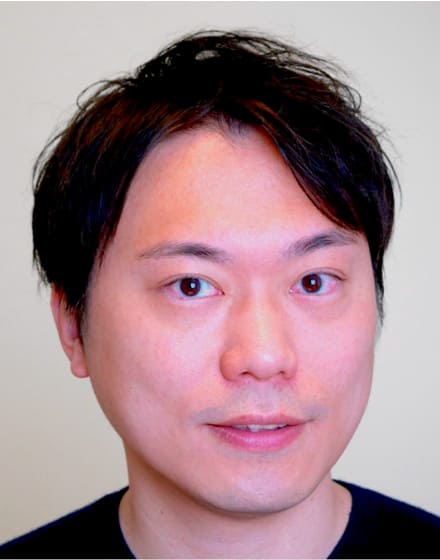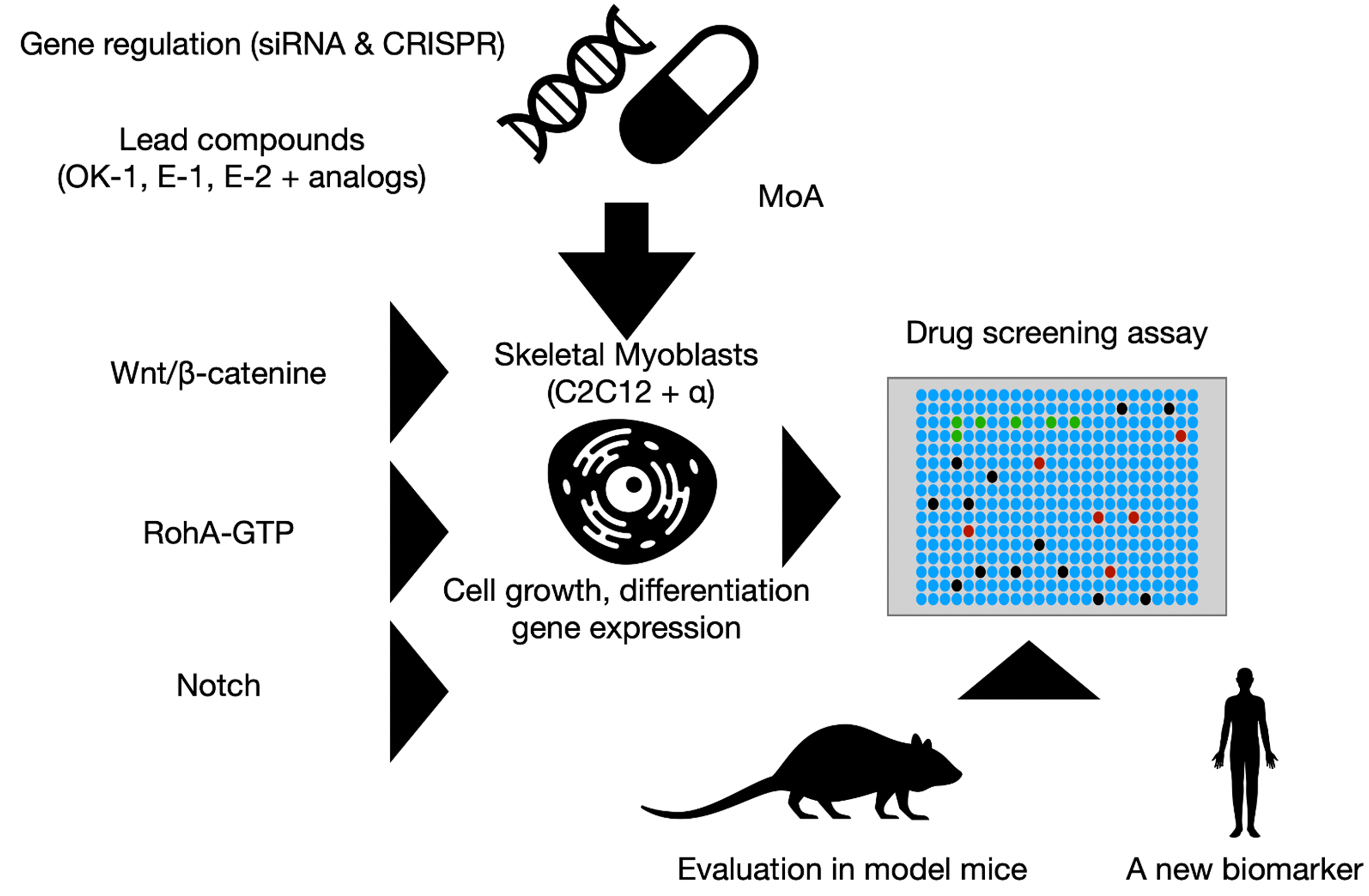Entrepreneurial Support Program 2022

- Principal Investigator
-
KEIO University
Motoshi Hayano
- Adopted Theme
Drug discovery platform associated with aging and sarcopenia
- Subject of Research
- Drug discovery platform associated with aging and sarcopenia
- Overview
-

We aim to establish a drug discovery platform associated with aging and to conduct a validation (PoC) study of the platform's efficacy. Currently, we have lead compounds (OK-1, E-1, E-2 and analogs) that have shown efficacy against sarcopenia and dementia. In addition, AI based data analysis of gene expression with lead compounds has indicate a list of candidate compounds targeting to aging. The drug discovery platform we develop in this project uses a cell-based system based on a novel MoA, such as Wnt/β - catenine, RhoA-GTP and Notch pathway.
- Business Models(when applying)
Although sarcopenia was defined as a disease by WHO in 2016, there has been no FDA approved drug yet. We have shown that OK-1, E-1, and E-2 have an effect on muscle mass and muscle strength. We aims to develop a novel treatment for the patient who has acute sarcopenia by bone fracture and infection. We also consider to license OK-1, E-1, and E-2 to pharmaceutical companies targeting aging hallmarks to develop a treatment for aging associated diseases such as dementia, AMD and heart failure.
- Activity Planning(when applying)
-

We use OK-1, E-1, E-2 as lead compounds to confirm a novel MoA in sarcopenia. We perform cell growth, differentiation and gene expression analysis using myotube cell lines. Wnt/β - catenin pathway, GTP pathway, and Notch pathway are main targets for aging and sarcopenia in this project. In addition, we have a list of OK-1 and E2 analogs, OK-2~7 and E3~15, and other approved drug as new compound candidates for sarcopenia and aging associate diseases. These compounds will be evaluated in in vitro assay to establish a novel drug discovery platform associated with aging. The platform will be used to identify a novel treatment including compounds to characterize and optimize it. In parallel, OK-1 will be developed as an oral drug and its efficacy and pharmacokinetics will be confirmed in experimental animals. Since E-1 is an approved drug, we confirm the efficacy of E-1 for muscle strength through clinical data analysis and biomarker analysis of sarcopenia.
